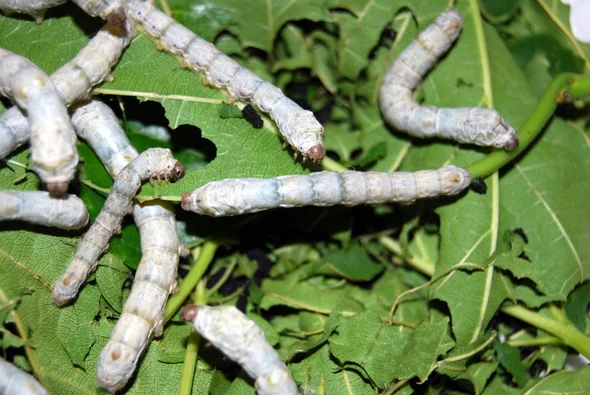- Published on
Feeding Tips for Insect-Eating Lizards
Lizards in general:
It is important to remember that each species of lizard may have different nutritional needs depending on what age it is or even what sex it is. For example, smaller, delicate hatchlings (eg. Chameleons & leopard geckos) require high amounts of calcium and vitamin D from small to provide strength to their bones as they grow fast to prevent Metabolic Bone Disease (MBD) which is seriously life-threatening & cannot be cured. Some lizards (such as bearded dragons) need bug protein for growth when young, but become more vegetarian as they get older & too many bugs can result in obesity once adult. It is also important to vary the type of insects fed - even the most nutritious bugs will never be a complete diet - so by offering a variety, lizards derive a larger mix of natural vitamins as well as are prevented of getting bored which can lead to a hunger strike!
Bearded Dragons:
- Always feed salad in the morning & bugs in the afternoon when the beardie’s metabolism has warmed up enough to digest them properly, this also gives them time to eat some of their salad first, which is essential for their correct nutrition & health. Mealworms & crickets are great staples for juveniles as these are easily gut-loaded.
- No water bowel is necessary. It increases the humidity & the lizards generally do not drink from standing water, but if so, might be inclined to eat less salad, leaving him lacking in essential nutrients.
- Expect to feed 4-8 bugs per day (depending on size) but have a couple of bug-free days per week for juveniles. Adult beardies become more vegetarian so less fatty insects should be offered as a treat (such as locusts) a few times a month (expect to buy just 2-3 boxes of bugs a month).
Leopard geckos & Chameleons:
- These lizards easily become vitamin deficient so it is essential to gut-load AND dust ALL insects offered with a good quality gut-load formula (such as Repashy bug burger) and a vitamin/mineral supplement containing FRESH vitamin A (available separately as ‘ACE High’, once opened lasts around 2 months). In theory, it is possible to overdose on D3, however when young they need so much of it as they grow so fast that despite seeing many, many examples of MBD through lack of Calcium/Vit D, it is extremely rare to see a lizard suffering from the effects of too much.
- Both these lizards cannot be ‘overfed’- they will eat what they need then stop when they are full. As long as they are not fed the wrong foods (stick to mainly calciworms, cockroaches & occasional dusted crickets or locusts) they should have insects available to them at all times to from which ‘graze’.
Gutloading
The term ‘gutloading’ refers to feeding insects, high quality food which then will benefit the lizard when it eventually consumes the bugs. Generally the food will stay inside the insects for a few days until it passes through the digestion & is excreted, so it is necessary to always top up the gut-load food as and when it is eaten by the bugs. We recommend and use Repashy bug burger for our insects. Our specialist reptile vet said that 4/5 of the lizards he sees have vitamin A deficiency due to the Vitamin A within supplements losing its effectiveness after 6-8 weeks. Repashy contains Vits A, D, E, Calcium as well as a myriad of bugs artificial plant extracts and the majority of the insects absolutely LOVE it! The ideal combination of gut-loading and dusting makes insects massively more beneficial to your lizard and has been known to cure health issues such as symptoms associated with Vitamin A deficiency (sore eyes, loss of appetite, shedding difficulties & sensitivity to light for example). You can also feed and hydrate your feeder insects using salad leaves, grass, carrot etc, but whilst this keeps your insects alive, if often doesn’t directly benefit your lizard. All insects should be dusted before feeding to your lizard with either a multivitamin & mineral supplement or plain calcium such as powdered cuttlefish bone.
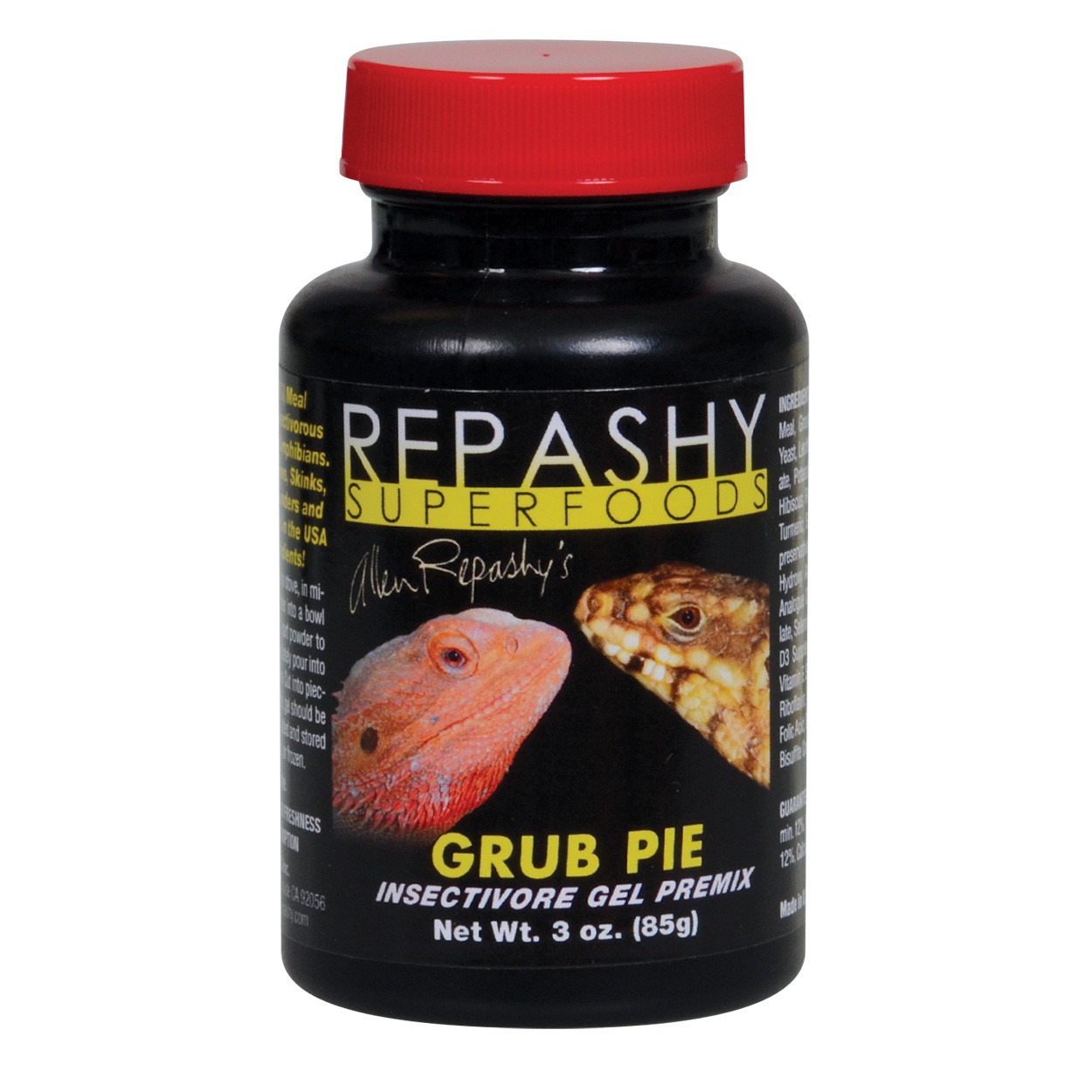
Locusts:
Keep locusts warm, feed juicy grass (not salad as this tends to sit in their stomach rotting unless they are kept very hot, which then kills the locust). They prefer the bug burger formula if it is slightly more runny. Locusts are perhaps less nutritious than other bugs, but are fun to feed as they jump about, meaning the lizard has to chase them.

Crickets:
Crickets need to be kept warm enough to be actively feeding on their gut-load food, but can survive colder temperatures. Keep them hydrated with regular ‘bug burger’ or with cricket gel (which is simply water in a gel form), carrot or small bits of salad, dandelion leaves or grass. NB: both crickets and locusts last much longer if they are transferred from the tubs they are sold in to ventilated, larger containers (such as plastic faunariums or cricket keepers) to prevent moisture, mould & death!
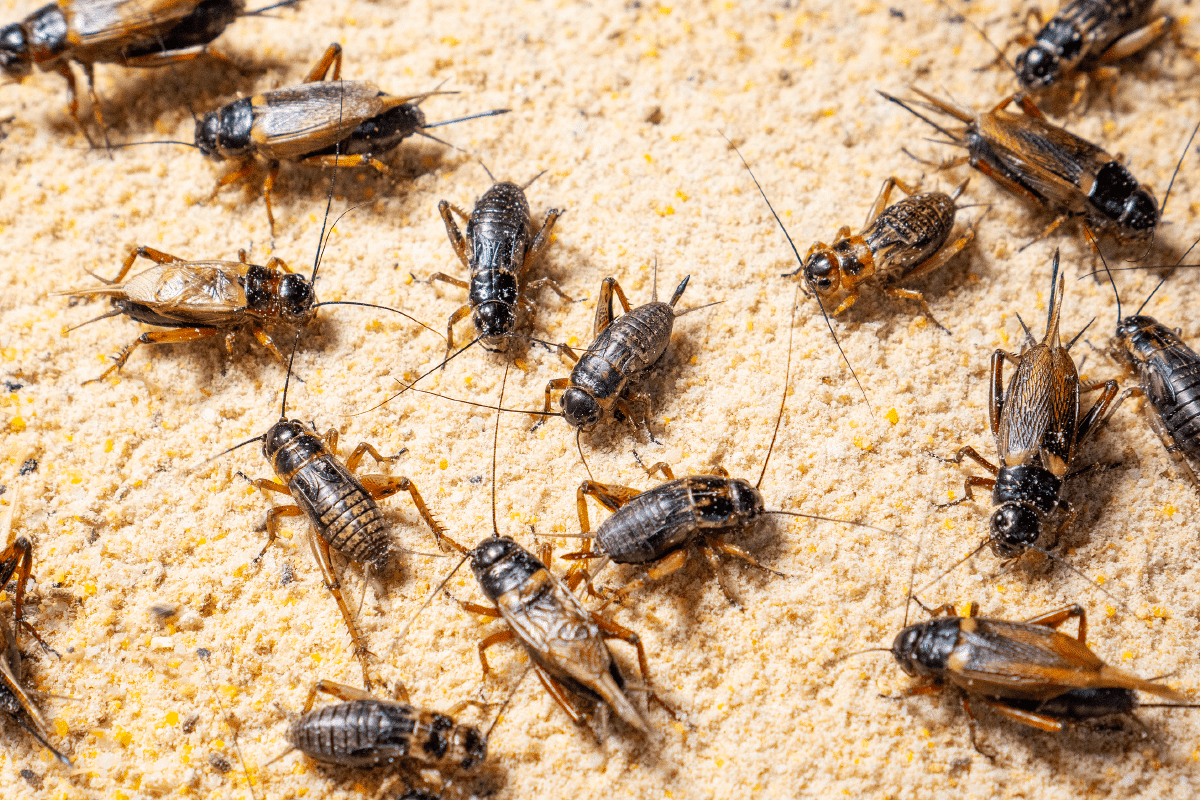
Mealworms:
Mealworms are the larva of the darkling beetle (which lizards do not eat). They need to be kept warm enough to actively consume their gutload foods, but too warm and they start to pupate so won’t last long. These are very easy to gut-load and will happily consume bug burger, carrot, brown bread, apple and salad leaves. It is important to keep these in a ventilated tub, preferably with no lid as if they get too moist, they start smelling bad and die. There are 3 sizes of mealworms – mini, standard & large, so choose the correct size in relation to the size of your lizard. When gut-loaded & dusted they make a particularly good staple food as they can be contained in a bowl and left in the enclosure without bothering the lizard (esp chameleons & leopard geckos) if it’s not hungry.

Morioworms/Superworms:
These are actually a type of jungle worm (rather than a mealworm as commonly thought). They exist in the wild in warm, jungle environments where they would consume meat as well as vegetables. If kept warm & ventilated, these worms can stay alive for several months and are a tasty food item for larger lizards. To maximise their usefulness as a staple these must be gut-loaded well and dusted. They hungrily eat repashy bug burger as well as brown bread, apple, carrot and salad leaves. These can cause obesity in bearded dragons if fed in too big a quantity without offering along with a variety of other bugs, but their longevity means there is no rush to feed them all before they die.
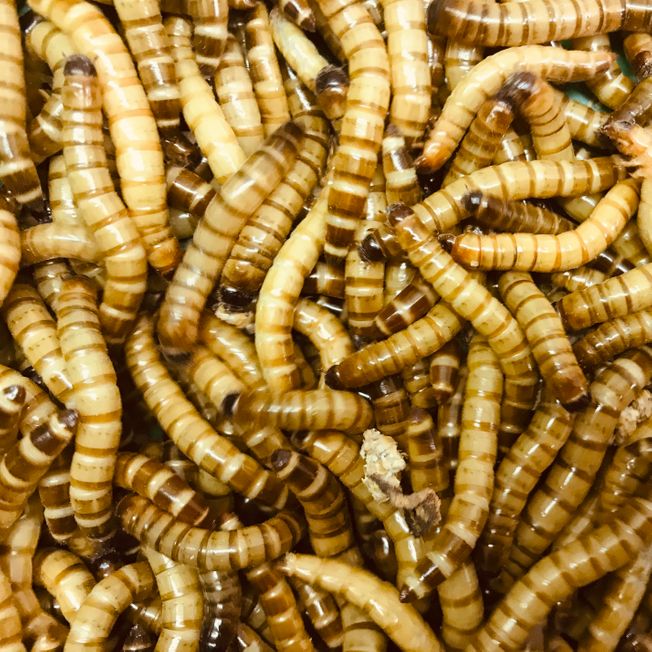
Waxworms:
Waxworms are the caterpillar of the white moth. They are very fatty with low nutritional content and it is not easy to gut-load these with anything that would be beneficial to lizards. However, these can be an occasional tasty treat for most lizards and are useful as an energy source for lizards which are weak or need feeding up. The moths that they turn into can also be fed to lizards such as smaller chameleons for a bit of variety. NOTE: Both butterworms and calciworms are MUCH better alternative to waxworms and are more nutrtionally beneficial, see below.
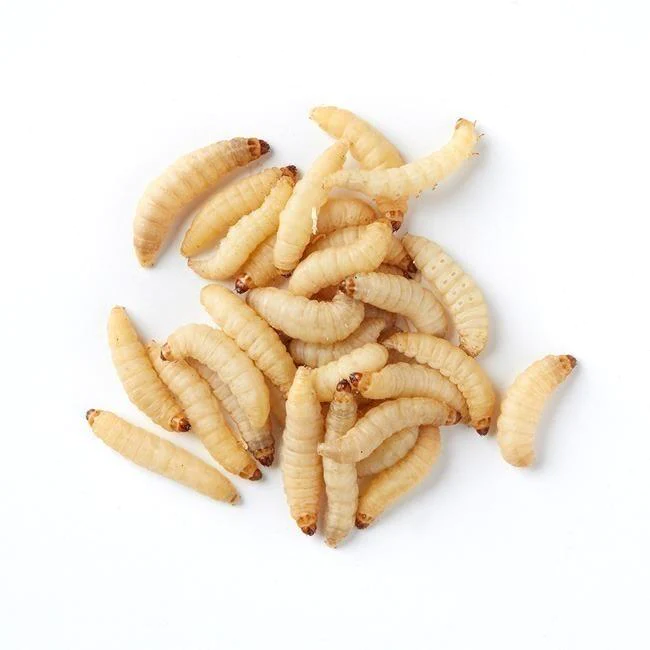
Pachnoda Grubs:
These are the grub of the sun beetle (pachnoda marginata) and can be a succulent, juicy & tasty treat for larger lizards. The grubs eat fruit such as banana and can be quite fatty so nutritionally they are not suitable as a staple food.
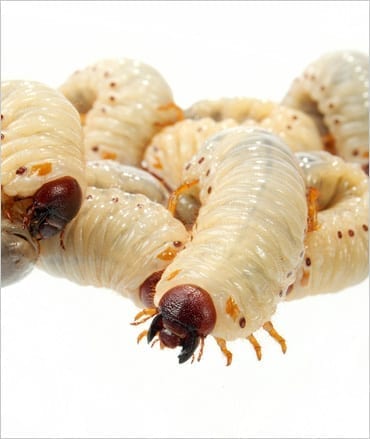
Calciworms:
These look like a cross between maggots and waxworms and are the larva of the soldier fly, which despite its appearance, is a harmless fly and not a wasp! They live in manure and peat & are high in calcium. Although difficult to gut-load with anything beneficial to lizards (they eat butternut squash), their high calcium content makes them an excellent food source for lizards that have particularly high calcium requirements from hatching, such as leopard geckos & chameleons. Their Ca/P ratio of 1:52 is near to the ideal 1:54 according to one of the leading livefood wholesalers.
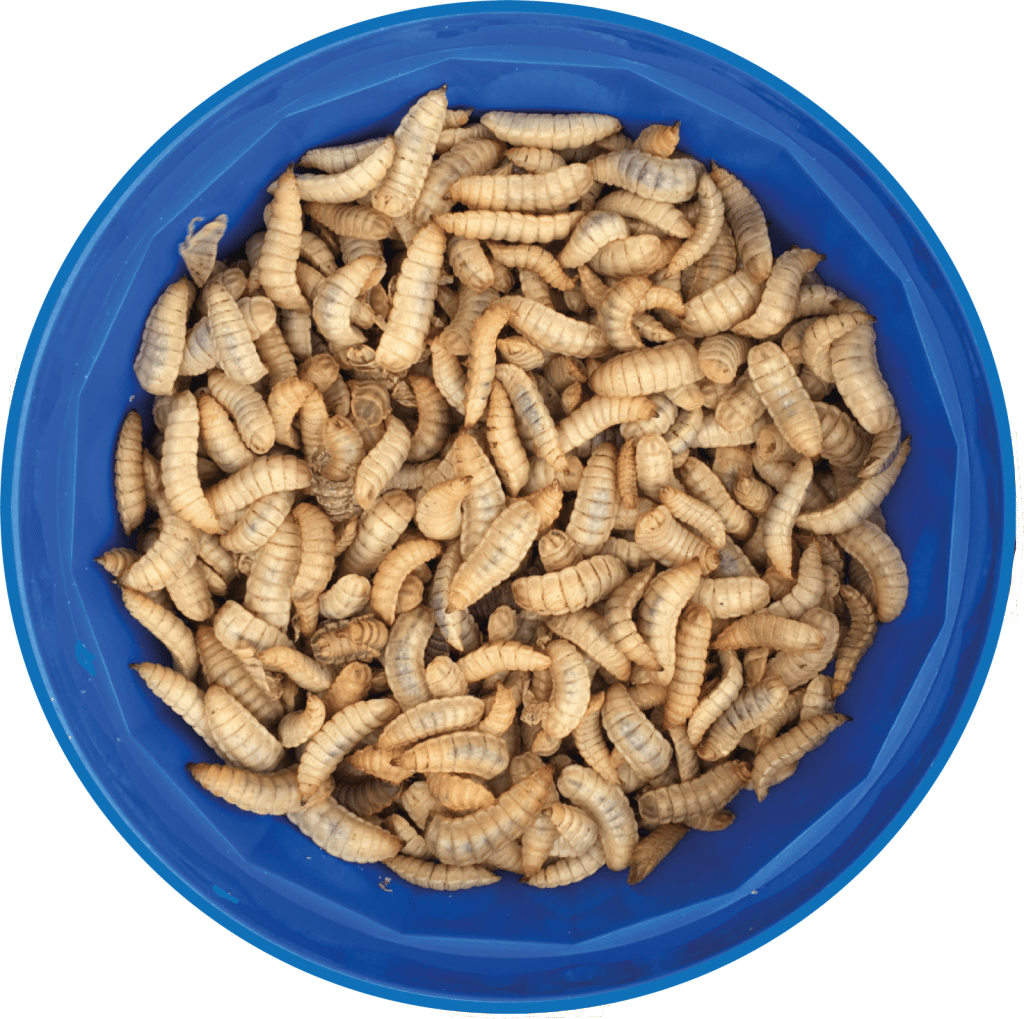
Cockroaches:
Roaches are an excellent source of calcium and protein and they are easy to gut-load, making them a brilliant feeder insect for lizards when available. Easy to breed and so can be fed from small to adult to lizards of all sizes – as long as you keep them in escape-proof containers! For more tips on breeding dubia roaches, look out for my step-by-step guide to doing it yourself, which will save you a bunch of money and keep your lizards supplied with a vary nutritious, calcium-rich food.
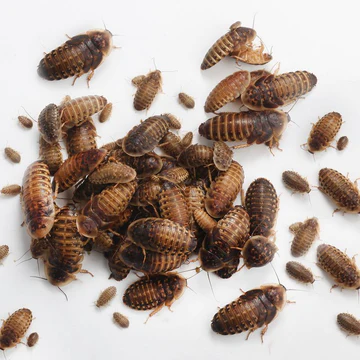
Butterworms:
If you are fortunate to find somewhere that sells butterworms then these are a great choice! They are imported from Chile by only one wholesaler in the UK (as far as I am aware) and they are expensive but one of the most nutritous and beneficial feeder insects that you can buy. They vary in colour from a reddish pink to yellow and kind of look like maggots but are a grub of a moth that is not native to the UK so in order to import them they have to have been irradiated to prevent them being able to turn into moths. They stay alive for a long time in the fridge but can't really be gutloaded. However, they are very high in both calcium and protein and there is no need to dust them before feeding. Pretty much every species of lizard seems to love them. Highly recommended if you manage to find any and definitely worth the extra cost.
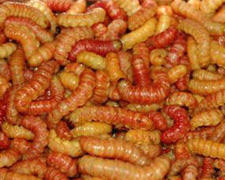
Silkworms:
Silkworms are also very nutritious and a great treat to feed lizards, especially chameleons. However, they are extremely tricky to breed or even keep alive for long periods of time as they ONLY eat mulberry leaves or the alternative which is something called 'Mulberry Chow'. I have bought silkworms from The Silkworm Store online, the owner Tom, specialises in silkworms (as well as most other insects I've mentioned here) and even provides the chow either already made or as a powder that you can make up yourself in the microwave (be warned - it really stinks!). Due to the silkworms being so sensitive, you must regularly clean the pot that they're in from their waste, but you have to use a paintbrush or tweezers as you can't touch them. You can also try breeding silkworms if you like a challenge and have a lot of patience, but my personal attempt ended up with only about 25 decent-sized worms from an original batch of 250 eggs and many of the mulberry leaves in the local area suffered significant loss of leaves! If you can do better than me it's worth it as silkworms are a really great source of food.
